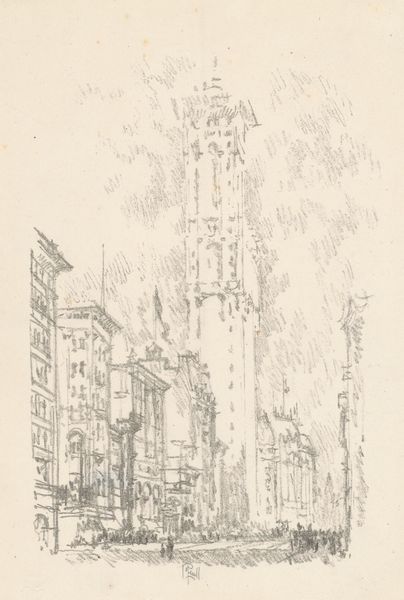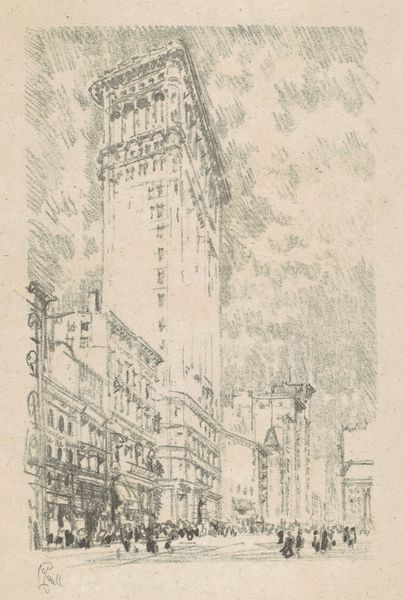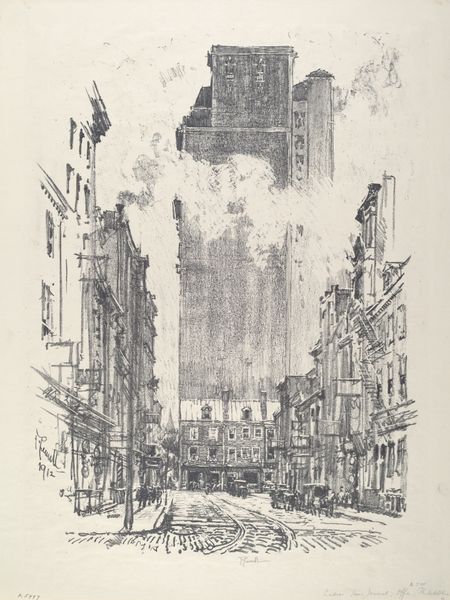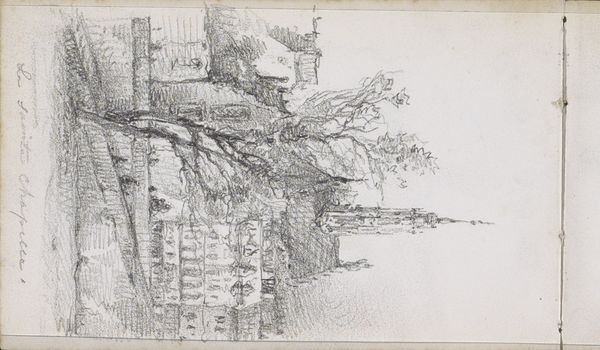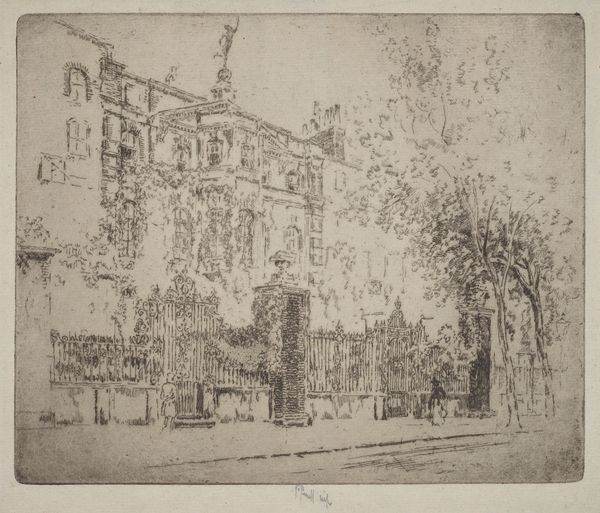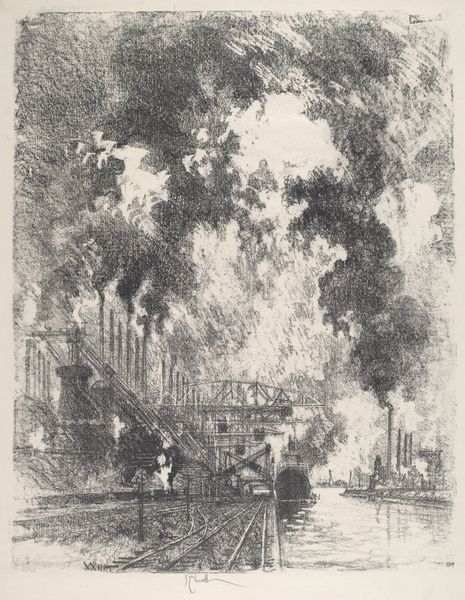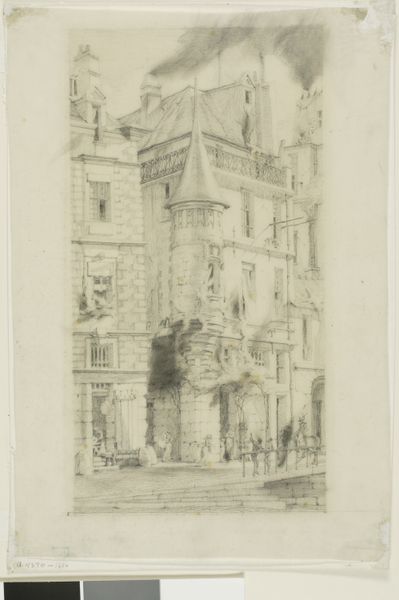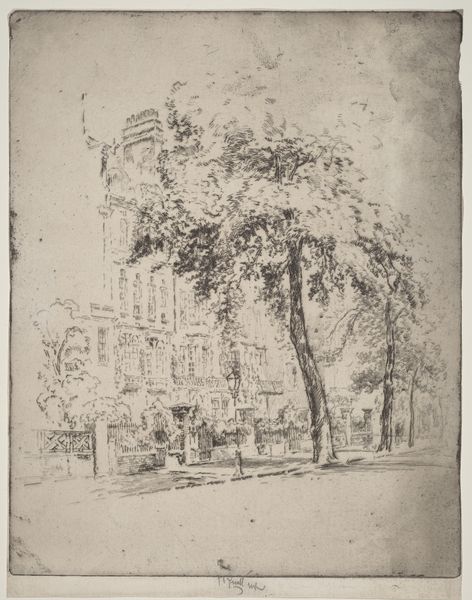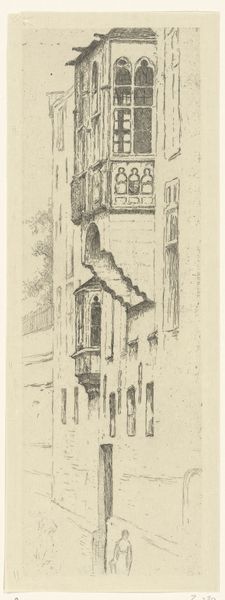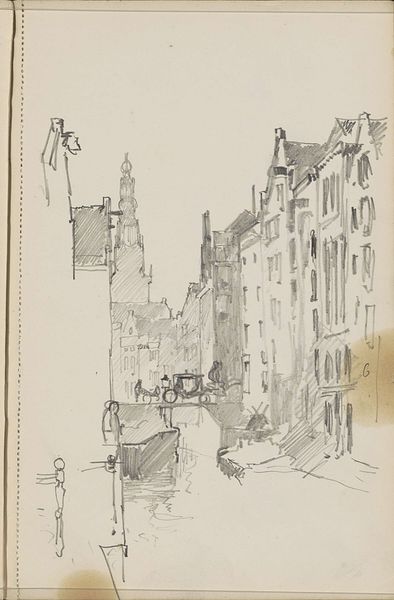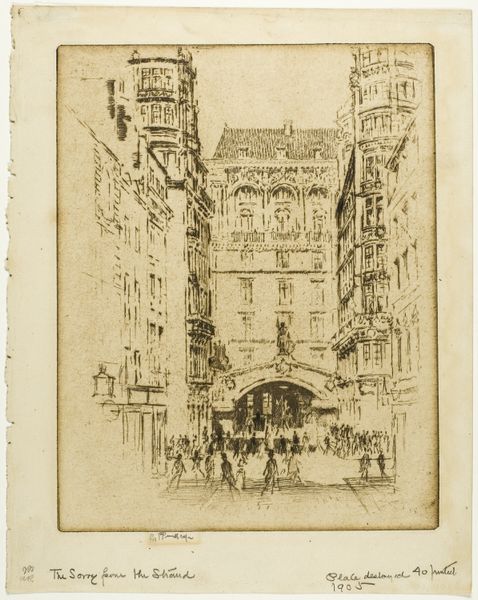
drawing, print, ink
#
precisionism
#
drawing
# print
#
ink
#
cityscape
Copyright: National Gallery of Art: CC0 1.0
Curator: Let’s discuss Joseph Pennell’s 1912 ink drawing, "Girard Street". It’s a compelling cityscape. Editor: Indeed. My initial impression is one of soaring heights juxtaposed with an almost melancholy stillness. The ink creates a subtle gradient of tone across the picture plane. Curator: I'm particularly interested in the urban development Pennell captures. Look at how he presents this specific location as representative of progress, while simultaneously showcasing a palpable class disparity through architectural differences. It's very reflective of its era. Editor: Absolutely, the architectural forms establish a hierarchical reading of space. The linear perspective draws our eye to the background where scaffolding offers both depth and alludes to continual construction. There is a certain semiotic charge in these marks. Curator: Consider also the social dynamics at play. The composition draws attention to individuals engaged in labor, prompting questions about their agency within the changing urban landscape and the social power structures inherent within this. How might their presence affect the viewer's interpretation of Pennell’s cityscape today, over a century later? Editor: An intriguing point. While I find myself returning to the density of line, it directs our perception, constructing volume and depth to give weight and form to otherwise seemingly simple street details. What appears like mere rendering, upon closer inspection, reveals rigorous methodology to his technique. Curator: It strikes me as significant that Pennell chose this particular viewpoint of Girard Street, potentially making social commentary. What specific statements could he be trying to highlight regarding race, gender, or class? Editor: Ultimately, while that is valid interpretation, Pennell’s manipulation of line, shading, and the juxtaposition of forms invites multiple interpretations which ensures continued dialog between the artwork and the audience. Curator: Indeed, examining how the drawing challenges viewers to critically investigate societal evolution can foster introspection regarding progress, power dynamics and inequalities today. Editor: Yes. Its beauty lies, not only in the quality of line, but in the very dialogue it continues to spark, long after it was first drafted.
Comments
No comments
Be the first to comment and join the conversation on the ultimate creative platform.
